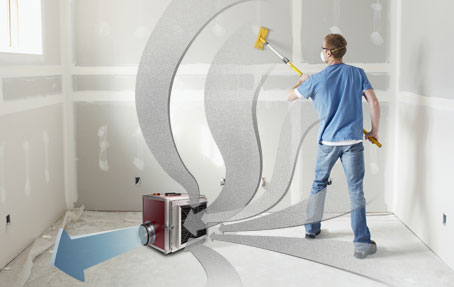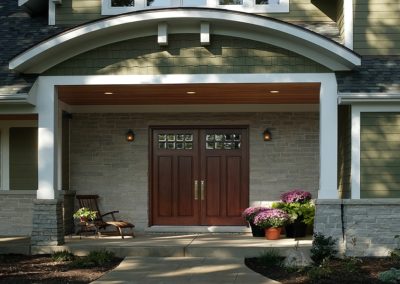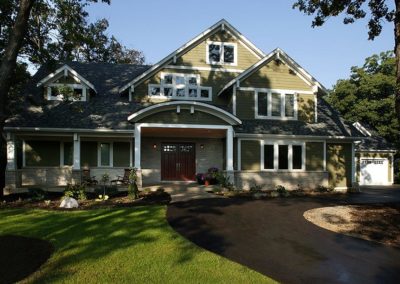When clients make a decision to remodel their home, the next question naturally is, “Can I stay in my home during a home remodel?” The answer is yes, most often you can. Of course if it’s an extensive whole-house renovation, we evaluate each project on a case-by-case basis. Because remodeling is one of our firm’s specialties, I have some important suggestions to share with you in order to make staying in your home during a remodel as safe and trouble-free as possible. The first thing I always recommend is – as always – ask your contractor a multitude of questions during the interview/feasibility process. If you get the feeling that he isn’t the utmost professional and you don’t have complete confidence in him and his team, don’t proceed further. In addition to having the skill level and experience to successfully complete your remodeling project, your contractor and his employees, subcontractors and design partners should have the attitude that they are guests within your home. They need to be trustworthy, respectful, house-trained guests each and every day. What does that mean? A few things.
Let’s tackle the basics – the most common concerns – one by one. In order for you to stay in your home during a remodel, it must be safe and clean.
Here are eight measures to take so you can safely stay in your home during a remodel:
1. Have trust in your general contractor. Have you called your contractor’s client references, vendors and sub-contractors? What do they have to say about him? When staying in your home during a remodel, you will see people coming and going who you’ve never seen before. When working with a reputable general contractor, he should never send anyone even remotely questionable to work in your home.
2. Have a lock box installed to a single entrance. It’s simply not practical for a homeowner to let people in and out every day. Everyone has busy lives and different schedules. This is where trust comes in again. Your general contractor should give each workman strict protocols to adhere to when it comes to entering/exiting clients’ homes.
3. Have a time standard set. Even though you want the work completed in a timely fashion, I know you want to eat dinner alone — in peace with your family — without hearing construction tools or having crews in other areas of your house. Having and sticking to a time standard is a very useful policy while staying in your home during a remodel. Our carpenters and sub-contractors arrive by 7:30 a.m. and don’t work past 4:30 p.m. so the homeowners know they’ll always “get their house back” and have it to themselves for the rest of the evening.
4. Have an expectation of common decency. This is where having an in-house carpentry staff makes a big difference. I tell my staff to continuously think about themselves as a guest in someone’s house. Just as you wouldn’t want your cousin who’s visiting with you this weekend to get food on the couch, the workmen must respect that they’re in someone’s home. Our on-staff carpentry crew makes such a difference! Some firms rely on their superintendant who makes a daily visit for an hour per day, but our in-house staff makes sure that our customers have a good experience throughout the whole process.
5. Have “house protection items” everywhere possible. This is not a homeowners’ responsibility; a conscientious general contractor should be permanently investing in a variety of house protection items. Our firm owns products that protect everything in your house, such as hardwood and tiled flooring, carpeting, countertops, tubs, drywall corners, door jamb openings, windows, outlets/switches, air filters and much more. A company based in Wauconda, IL called Protective Products International, Inc. has a comprehensive list of what your general contractor should be protecting prior to commencing a project.
6. Have a plan to minimize the spread of dust. We take the highest precautions to protect our clients’ homes, but most contractors do not go to the lengths we do. We love the BuildClean Dust Control System and utilize this system during renovations large or small. It truly makes a big difference! It works by drawing air from the surrounding environment, then passes it through two particle-trapping filters, and returns clean air into the space. It’s a great product made by BuildClean, which is based locally in Schaumburg, IL. Here’s a link to the company’s Web site so you can read more. I’ve included a couple of photos as well. 
 There are several things your contractor should absolutely do to restrict the flow of dust. At the very least, a basic dust reduction strategy should consist of three things:
There are several things your contractor should absolutely do to restrict the flow of dust. At the very least, a basic dust reduction strategy should consist of three things:
A. Create “negative pressure” when possible by placing a special fan in the window that exhausts air out of your home.
B. “Scrub” the air with air cleaners. Contractors should bring their own air filters to the job site, which puts less of a burden on the homeowners’ HVAC system. We place filters on the intake side of a homeowners’ furnace. This extra step does wonders because it filters the “dirty” air before the homeowners’ furnace is able to suck in dust particles.
C. Enclose the job site with Protective Products’ “Zipwall System” or something similar, which creates yet another dust barrier between the construction zone and other areas of the house.  7. Have at least one zone that’s construction-free. If you decide to stay in your home during a remodel, set up at least one sealed-off, construction-free zone somewhere semi-convenient, and use it to take a quiet coffee break.
7. Have at least one zone that’s construction-free. If you decide to stay in your home during a remodel, set up at least one sealed-off, construction-free zone somewhere semi-convenient, and use it to take a quiet coffee break.
8. Have a plan for your kids — and pets. Kids and pets are curious creatures. They need to stay away from the construction zone during a remodel. If you have a young child who still takes naps, know that the work will continue. It’s in your best interest to make alternative plans if you have more than one pet or multiple children whom you cannot supervise continuously.
Very soon, I’ll post a blog specifically about living through a kitchen remodel, where I’ll offer tips about the placement of food, water, nonperishable items, microwaves and more … a different topic for a different day. If you choose to stay in your home during a remodel, let me know if any of these suggestions were helpful to you. As always, contact me if you have any specific questions. Good luck!




